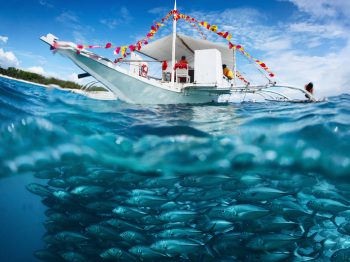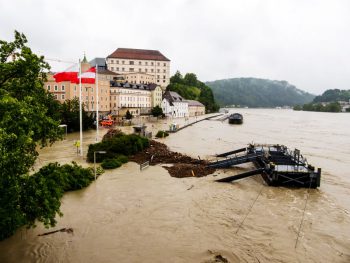Policy advice informed by evolutionary fisheries science
Fish populations live in an ever-changing interaction with their environment. One key aspect of this interaction is so-called compensatory mechanisms. These are processes that make populations more productive when they decline, thus facilitating their recovery, and less productive when they approach the carrying capacity of their environment, which eventually prevents further population growth.
In fisheries science, it has traditionally been assumed that the main compensatory mechanism occurs through recruitment, which is the process whereby the population grows due to the addition of juvenile fish. The compensatory mechanism takes effect when the population gets larger, causing each spawning fish to produce on average fewer surviving offspring. This assumption underlies much of the scientific advice that helps fishery managers establish sustainable fishing levels. At the same time, there is little empirical evidence of such a relationship between the abundance of spawning fish and the resulting recruitment. How can we reconcile these apparently conflicting suppositions?
One possibility is that other compensatory mechanisms than recruitment are important. A plausible mechanism is that fish grow slower in relatively crowded populations. IIASA researchers tested this hypothesis with data from a large number of fish populations from the Northeast Atlantic [1]. Long time series data of population size, recruitment, and average body weights allowed the team to compare the strength of compensation between population size and recruitment, as well as between population size and body growth.
The results show that the old wisdom of compensation in recruitment holds water. In most cases, compensation in recruitment was stronger than compensation in growth. However, compensation in growth was often present too, and in a few cases, it was a stronger compensatory mechanism. This is an important insight because ignoring compensation in growth when it is actually present, may lead to management advice that predicts overly positive outcomes for fish stock rebuilding plans [1].
Observations of individual fish can reveal more subtle changes in population characteristics occurring over longer time scales. Probabilistic maturation reaction norms, which is a method previously developed and applied at IIASA [2], have typically suggested that marine fish populations evolve a tendency to start reproduction at an earlier age in intensively exploited populations [3].
A study undertaken at Lake Erie in the US, however, shows the opposite pattern. Following a reduction in the exploitation pressure, yellow perch females started to delay their reproduction. This is a rare example of a possible evolutionary recovery towards a more pristine reproductive schedule [4]. A comparison over space rather than time of two populations of cutlass fish (a major commercial species in East Asia) further revealed that the population exposed to higher fishing pressure matured earlier than the one facing less pressure from fishing [5].
References
[1] Zimmermann F, Ricard D, & Heino M (2018). Density regulation in Northeast Atlantic fish populations: density dependence is stronger in recruitment than in somatic growth. Journal of Animal Ecology 87 (3): 672-681.
[2] Dieckmann U & Heino M (2007). Probabilistic maturation reaction norms: their history, strengths, and limitations. Marine Ecology Progress Series: 335: 253–269.
[3] Heino M, Diaz Pauli B & Dieckmann U (2015). Fisheries-induced evolution. Annual Review of Ecology, Evolution, and Systematics 46: 461-480.
[4] Gíslason D, Heino M, Robinson BW, McLaughlin RB & Dunlop ES (2019). Reaction norm analysis reveals rapid shifts towards delayed maturation in harvested Lake Erie yellow perch (Perca flavescens). Evolutionary Applications (In Press)
[5] Wang H-Y & Heino M (2018). Adaptive and plastic variation in growth and maturation of the cutlassfish Trichiurus japonicus in the subtropical Pacific Ocean. Fishery Bulletin 116 (2): 171-182.
Further information
Collaborators
- University of Guelph, Canada
- Ontario Ministry of Natural Resources and Forestry, Canada
- Fisheries and Oceans Canada, Canada
- Institute of Hydrobiology, Czech Republic
- University of Bergen, Norway
- Institute of Marine Research, Norway





